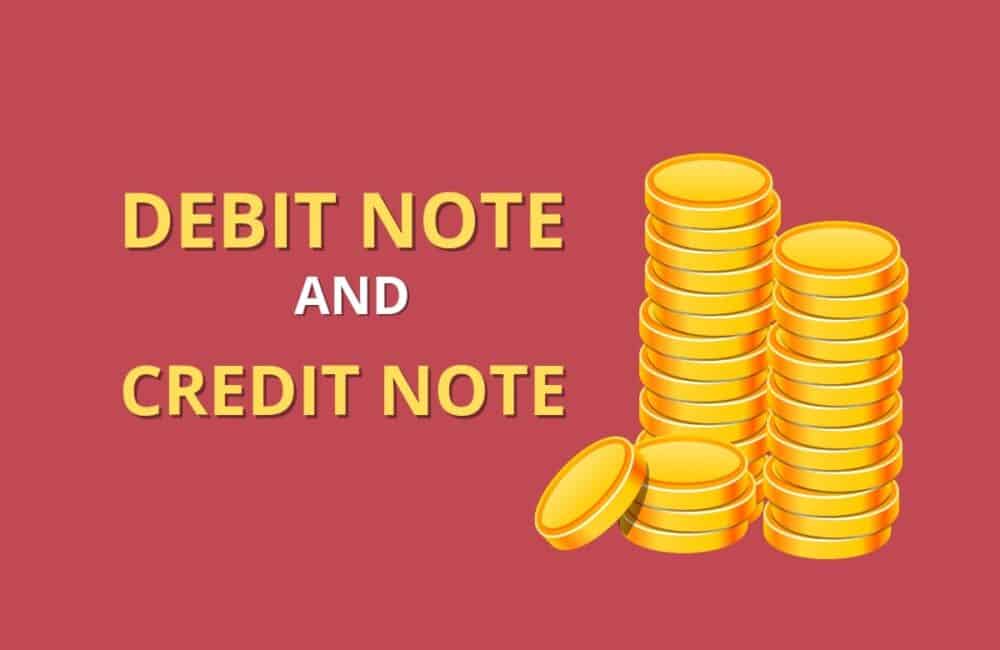A debit note and a credit note are both official accounting documents, both used by businesses, but for different reasons.
What Is A Debit Note?
Debit notes or debit memoranda are commercial documents that are issued by a buyer to the seller as a formal request for a credit note. This document serves as the source for the Purchase returns journal. This type of note is known as a debit note.
Debit notes are also known as debit memos. In the event of damaged or incorrect goods or services, or if a purchase has been canceled by the buyer, the buyer may request a refund of funds from the seller. To issue a credit note, a provider must first issue a debit note. The debit note acts as the purchaser’s formal request for the supplier to issue a credit note.
In some situations, buyers may return some or all payments to sellers by issuing debit notes to them. The error may be caused by damaged or incorrect items received or cancellation of the order, among other reasons. In the buyer’s accounting books, a debit note is evidence of a purchase return. However, a credit note shows that the product has been returned.
When you receive goods or services from a seller that do not meet expectations, a customer claim is made. The debit note can be issued in the event you wish to return goods to a supplier for any valid reason
Debit notes are commonly issued for the following reasons:
- Receiving goods that are damaged or defective.
- The purchaser has overcharged the invoice.
- Incorrect amount on the invoice
Also Read: What is UTR Number & How to get UTR Number?
What Is A Credit Note?
Credit notes and credit memos are commercial documents issued by a seller to a buyer. A credit note is the source document for a sales return journal. This type of document is known as a credit note. Credit notes are also called credit memos. A claim may arise as a result of a damaged or incorrectly supplied an item, a canceled purchase, or an incorrect invoice. This document may be used as a reference by a purchaser or customer for a future order.
Credit notes are commonly issued for the following reasons:
- It is permissible to issue multiple credit notes as long as the invoice amount does not exceed the total.
- Errors in previously issued invoices.
- Errors in discounts.
- Cancellation of pending invoice payments.
Debit Note Vs Credit Note: Key Differences
| Comparison Factors | Debit Note | Credit Note |
| Meaning | A debit note is a document that reflects debiting the account of the other party. | The Credit Note is an instrument used to notify the other party that his account has been credited in his books. |
| Ink Color Used | Blue Ink | Red Ink |
| Represents | Positive Amount | Negative Amount |
| Which book is updated in accordance with the note? | Purchase Return Book | Sales Return Book |
| Effect | Minimization of account receivables | Minimization of accounts payable. |
| Exchanged for | Credit Note | Debit Note |
Detailed Information That Should Be Included In A Debit Note And Credit Note
Upon returning certain goods to the seller, debit and credit notes are issued. The customer notifies the seller that he is returning certain items that have been purchased by him/her through a debit note. Alternatively, a credit note informs the customer that the money for which the debit note was issued has been returned.
The following details are required to be included on a credit or debit note:
- Name, address, and GSTIN of the supplier.
- A unique alphanumeric serial number for the financial year.
- Date of issuance.
- A GSTIN, as well as the name and address of the beneficiary. It is possible to use the recipient’s name and complete address if he or she is not registered.
- A debit or credit note should be accompanied by the invoice number.
- Signed and stamped by the supplier.
Also Read: Bank Rate Vs Repo Rate
Additional Remarks On Debit Note And Credit Note
- Credit or debit notes can be issued at any time as long as they are issued in the appropriate year.
- GST returns must contain debit and a credit note for each month except for September, which is the month following the end of the financial year when the supply was made and the month of filing the annual return.
- Credit notes will negatively affect tax collection, while debit notes have no impact on it.
Is There A Time Limit For Retaining Credit Notes/Debit Notes?
Records of credit notes and debit notes must be retained until seventy-two months have elapsed since the due date for submitting the annual return for the year about such accounts and records. Whenever such business accounts and records are maintained manually, they must be kept at every related business location specified in the certificate of registration and shall be accessible at every related business location where such accounts and records are maintained digitally.
Recommended:
What is Cash Credit & How does Cash Credit Work?
What is the Biggest Challenge for Most Businesses When Going Online?
Credit Rating Process: A Complete Beginner’s Guide
Frequently Asked Questions
In What Situations Should A Credit Note Be Issued By The Supplier?
When the original tax invoice was already issued and the taxable value exceeded the actual taxable value. Upon receiving the goods or services, the recipient is not satisfied with the item and requests a partial refund, returning goods if any.
When Does A Supplier Need To Issue A Debit Note?
Following the issuance of a tax invoice, it is determined that the taxable value stated is less than the actual taxable value. A tax invoice is issued, and it is then discovered that the amount charged is less than the actual tax due.
How Does A Supplementary Invoice Work?
If a deficiency is found in an already raised tax invoice, a supplementary invoice will be issued by a taxable entity.
How Does A Revised Invoice Work?
With GST, all invoices that are issued between the date of implementation of GST and the date of issuance of the GST registration certificate must be revised and reissued within one month of the date of issuance of the registration certificate.
What Is A Debit Note In GST?
Debit notes are written notices from the customer to the seller or supplier requesting that payments made in connection with faulty goods or services be adjusted or refunded




